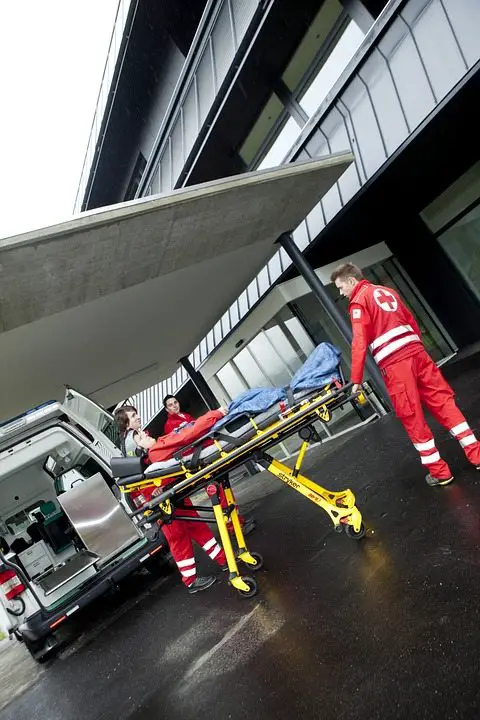
Some radiology residency programs throughout the country often claim a great outpatient experience. And others, if you ask, they won’t mention it at all. As an interviewee, you may not think about this segment of radiology. But, as a practicing radiologist, this is where you will spend a good chunk of your time.
So, what are the different sorts of outpatient experiences? And, is this outpatient experience even critical to your training? Or, is it something that you can forego because the hospital covers it? The bottom line, are you getting the outpatient time that you need?
Let’s investigate the world of outpatient radiology and what it all means for the typical radiology resident. To do so, I am going to discuss why it is critical to your training. Then, I will split the categories out outpatient imaging into those that you might encounter. And finally, I will talk about what you genuinely need in radiology residency to make your outpatient experience complete.
Why Is Outpatient Imaging So Important?
They say that about 90 percent of radiologists go into private practice (me included!), and the other 10 percent become hospital academics. And, a large swath of those 90 percent practices some form of outpatient imaging. Moreover, the imaging mix differs in outpatient imaging compared to the standard hospital menu of cases. So, if you want to simulate the real practice of radiology, you need some form of outpatient experience.
Three Different Types Of Outpatient Environments
Hospital Outpatient
Almost all hospitals have nonemergent patients that will show up to receive their imaging. The extent can vary from hospital to hospital depending on the location, patient mix, etc. However, the sort of patient that shows up for nonemergent imaging at a hospital tends to differ from the standard clinic patient that wants imaging. These studies often are more complex. And, they show up to the hospital either because they have some complicating issue that prevents them from getting outpatient center imaging (asthma, contrast reaction, etc.) Or, they may have an appointment at the hospital and may as well get their studies. Finally, less likely, a patient will show up here because he wants to go to a hospital rather than an imaging center.
Regardless, these outpatients will less likely have complaints like osteoarthritis or a superficial lump on the back. Instead, the patients will overall have more complex and involved issues. So, your mix of patients will not be the same.
Hospital Owned Outpatient Center
This experience is a hybrid between private practice imaging and the outpatient hospital experience. Here, you will get complex referrals from a hospital center. But, you will also receive the more typical outpatient type of studies. When you sit down and read, you will find a mix of patients with widely varying difficulty levels of cases.
Private Practice Outpatient
And most likely, private practice is what you think of as the “pure” outpatient experience. Here you get referrals almost exclusively from local doctors. Or, you will get patients who come in independently to receive screening tests like mammograms. Cases tend to be more one complaint sort of issues with more “normals.”
How You Might Experience Outpatient Radiology
Sampling
Depending on how the residency arranges your outpatient experience, you may be an occasional observer. Perhaps, the attendings dictate the outpatient cases because they get paid for them. And, you get to watch them interpret the studies. Or, it may be a random sampling as you are reading hospital outpatients. In either case, this is not the immersive type of outpatient experience.
Immersive
Here, you will be primarily interpreting outpatient cases and having your attendings sign off on them. It is much more similar to the daily workflow you might encounter in any given private practice. You will have a more similar experience as an outpatient private practice radiologist.
What Is The Best Outpatient Experience?
Well, as usual, the answer depends. Though, the key to becoming an excellent radiologist, in general, is to have varied experiences across the board. It is possible to have too much outpatient radiology at the expense of inpatient imaging, especially if you want to become a hardcore academic. So, you need to ask yourself, am I getting a broad enough experience concerning all the other segments of radiology training for my interests?
Nevertheless, I would recommend searching for a program that gives you the capability of reading and interpreting all sorts of “simple” and complex outpatient cases. And, I also believe that immersive experience is better. Why? Well, it allows you to get a feel for private outpatient practice. And, it will enable you to make a more informed choice of practice situations when you ultimately decide to settle on a final path.
Are You Getting What You Need To Become An Excellent Radiologist?
Having all the ingredients available for you to get the training you need to become a radiologist, well, that is the main point of residency. So, if you are in a situation that does not give you the right mix outpatients, look into ways that you can get the appropriate outpatient experience. Take some time and effort on your part to create a custom rotation. Or, push your faculty to allow you to get the proper exposure. In any case, make sure not to skip out on this subsegment of radiology. Without this experience, you will not be the consummate well-trained radiologist you want to be!













